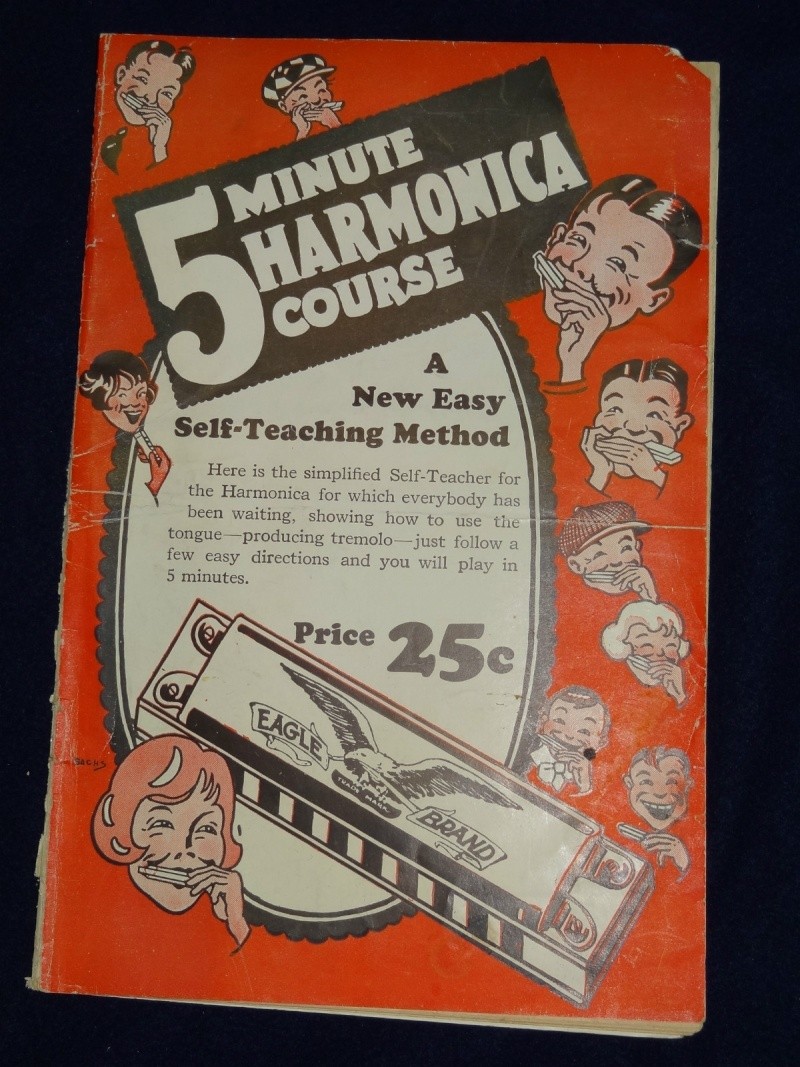L'harmonicaOne of Bazin's harmonicas, dating to the early 1830s, is housed in the Boston Museum of Fine Arts.

While the quinessential story of the harmonica has it as a uniting force in the Civil War,
or used by cowboys to calm herds on long drives, there is no evidence of either of those happening.
In fact, the harmonica was mostly absent from the United States,
save those in the hands of German immigrants - until the last two decades of 19th Century.
(If you really are attached to the cowboys calming herds story, it actually was true for Australia). 
Harmonica companies start looking curiously at the global market, especially the United States,
after the Civil War and in the 1880s,
two seemingly-unrelated revolutions a half-world apart created
the perfect storm for harmonica sales in the United States.
Not long after the Germans found a way to mass-produce harmonicas,
Americans created a way to sell them as never before.
For the first six decades of the harmonica's history, reeds were entirely handmade -
hammered flat from brass wire and further shaped with hand files.
In the 1880s, however,
manufacturers across Germany began using form tools to automatically mill large numbers of reeds quickly and accurately.
There is a patent from 1877 for a horsewhip that has a harmonica built in.
It refers to it as a "common instrument.
" How "common" is yet to be understood,
but it seems the harmonica's popularity in America began in the mid 1870s.
You don't see harmonicas appear in mail-order catalogs until the late 1870s,
and if anyone knows of an earlier catalog reference, I would love to know about it.
There are no harmonicas in the 1875 Montgomery Ward's catalog,
but I do see them in Macy's 1877 catalog -
GRETSCH:gretsch eagle brand ... https://gretsch.forumactif.com/t712-gretsch-eagle-brandles-cordes-gretsch 1926 petit livret pour apprendre a jouer en 5 minutes
1926 petit livret pour apprendre a jouer en 5 minutes


Dans les années 1930, les États-Unis ont interdit l'importation de marchandises allemandes
pour protester contre l'expansion d'Hitler du Troisième Reich-.
Cette pénurie effectivement mis fin aux programmes de l'harmonica vendu dans les écoles,
qui avait été un catalyseur important de l'engouement harmonica.
Cependant, les militaires amoureux de l'harmonica ne pouvaient pas toujours trouver les instruments qu'ils voulaient.
Frank R. Neubauer, à la base de la marine américaine à San Francisco en 1943,
a eu beaucoup de mal à trouver un remplaçant de l'harmonica chromatique.
Il a écrit au fabricant de l'appareil
Gretsch pour demander de l'aide.
Gretsch répond dans une lettre datée du 1 décembre 1943:
"
Désolé" "mais tous les harmonicas ont été retirés du marché pendant une longue période et je crains qu'il n'y en aura plus de disponible jusqu'à ce que cette guerre soit finie."
http://elkriverharmonicas.com/harp_school/harmonica_in_america_part_iv
http://elkriverharmonicas.com/harp_school/harmonica_in_america_part_v
source: http://elkriverharmonicas.com/home
----------------------------------------------------------------------------------------------------------------------
Quelques modèles trouvé sur le net ----------------------------------------------------------------------------------------------------------------------
Chromatic harmonica by Gretsch "double-sided" 
Chromatic harmonica by Gretsch, Germany, after 1930.
This double-sided chromatic harmonica in C and G was a short-lived experiment.
Most chromatic players became adept enough to play in any key on a C-tuned instrument, so a second key was unnecessary.
